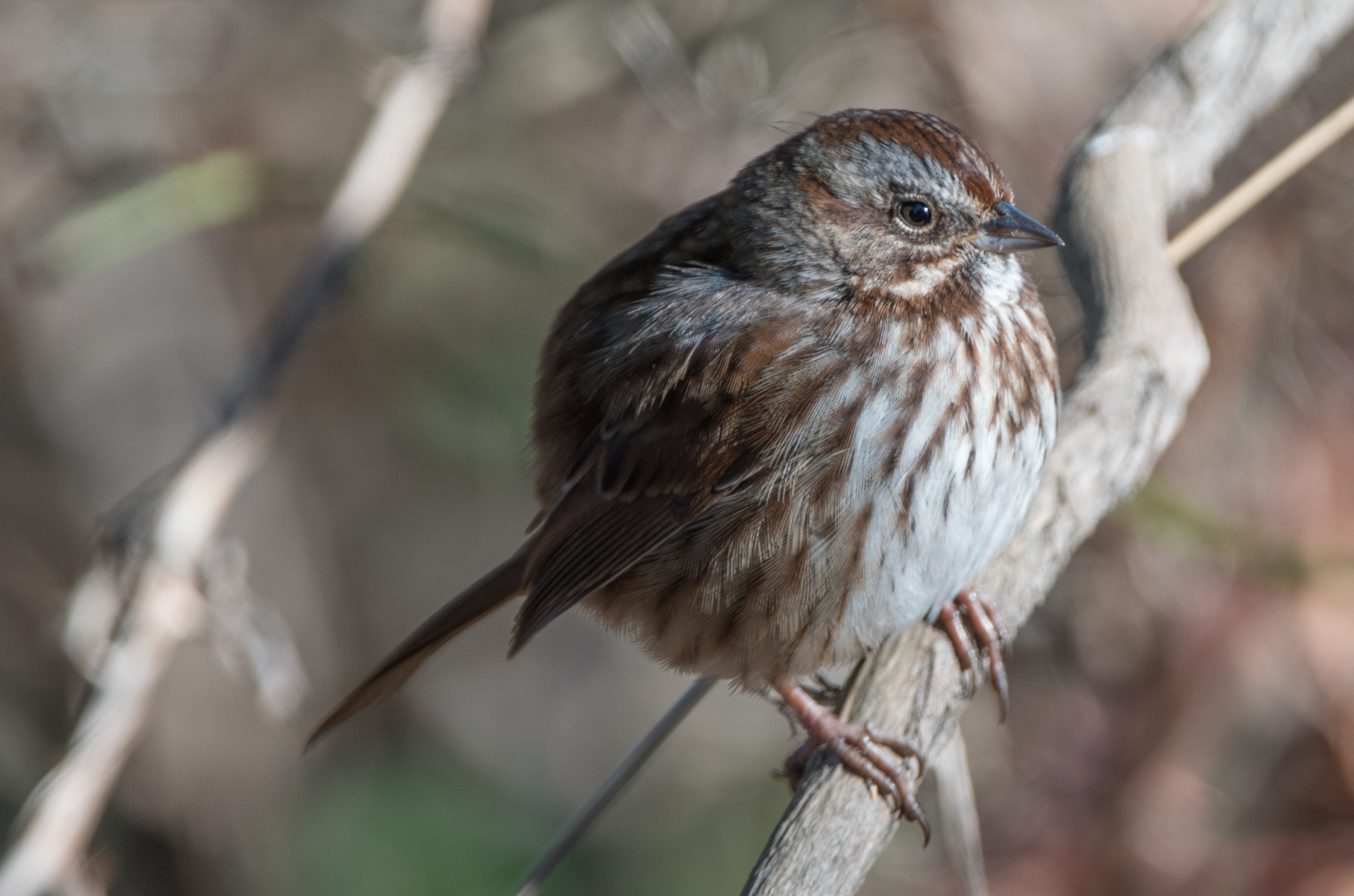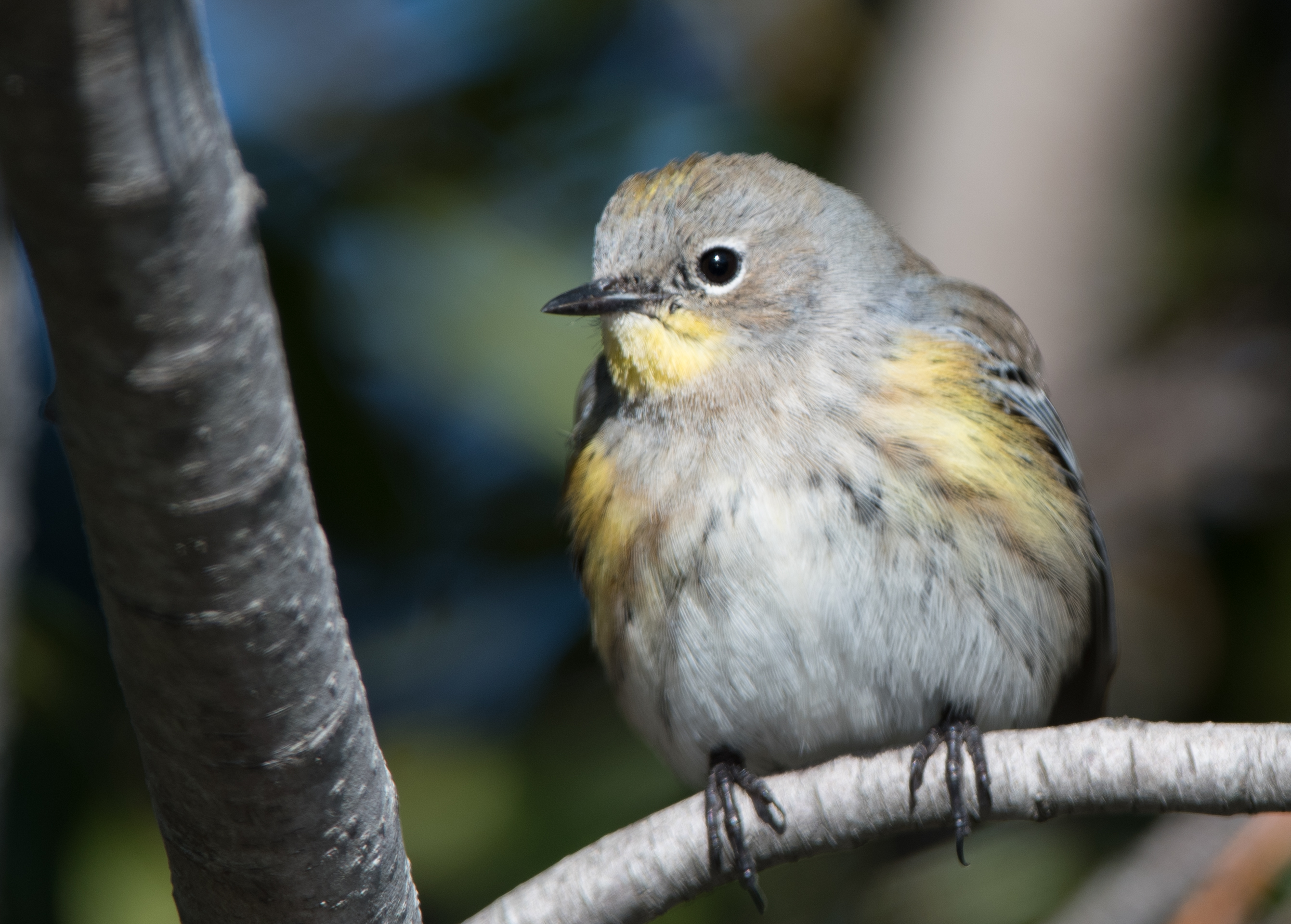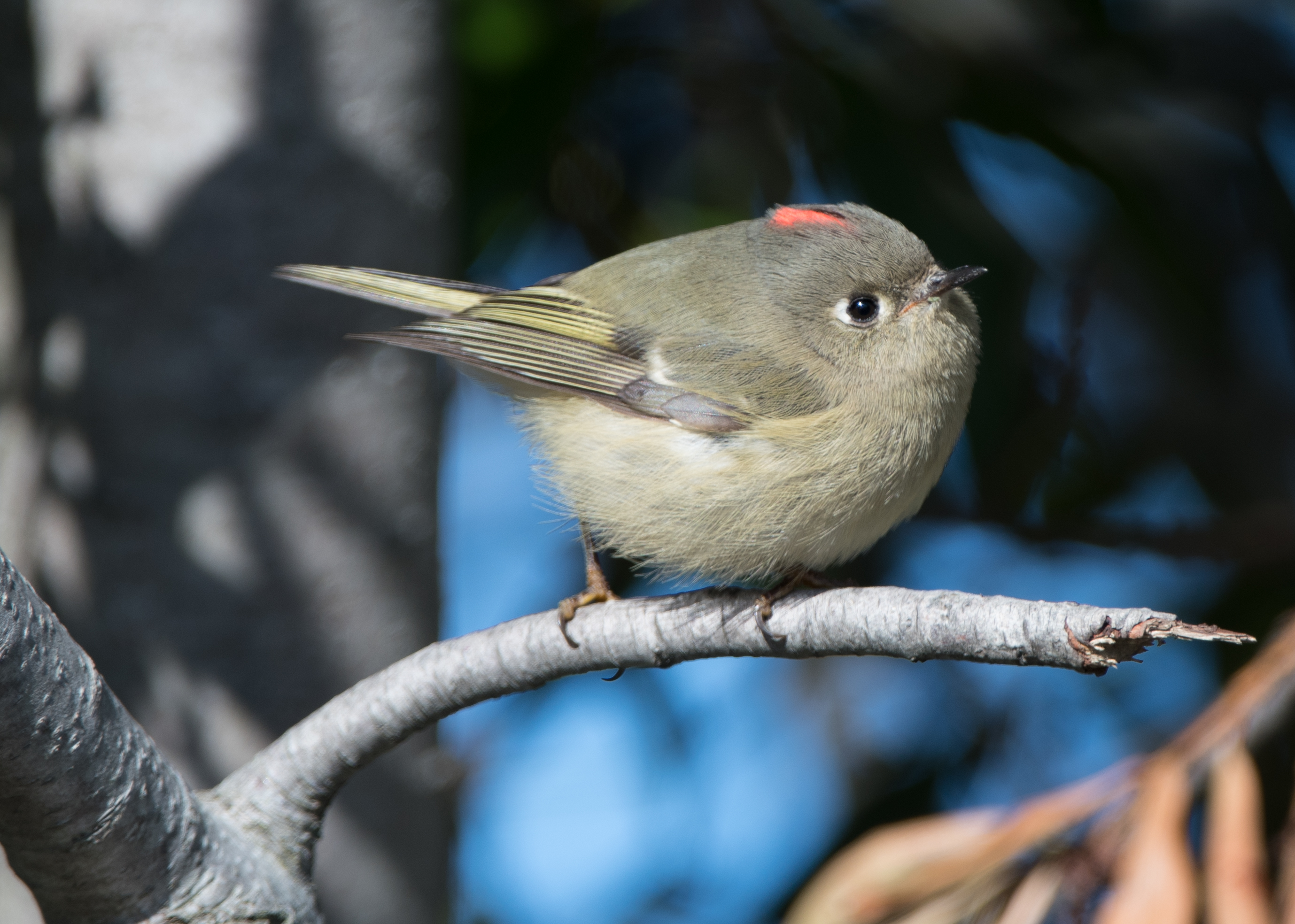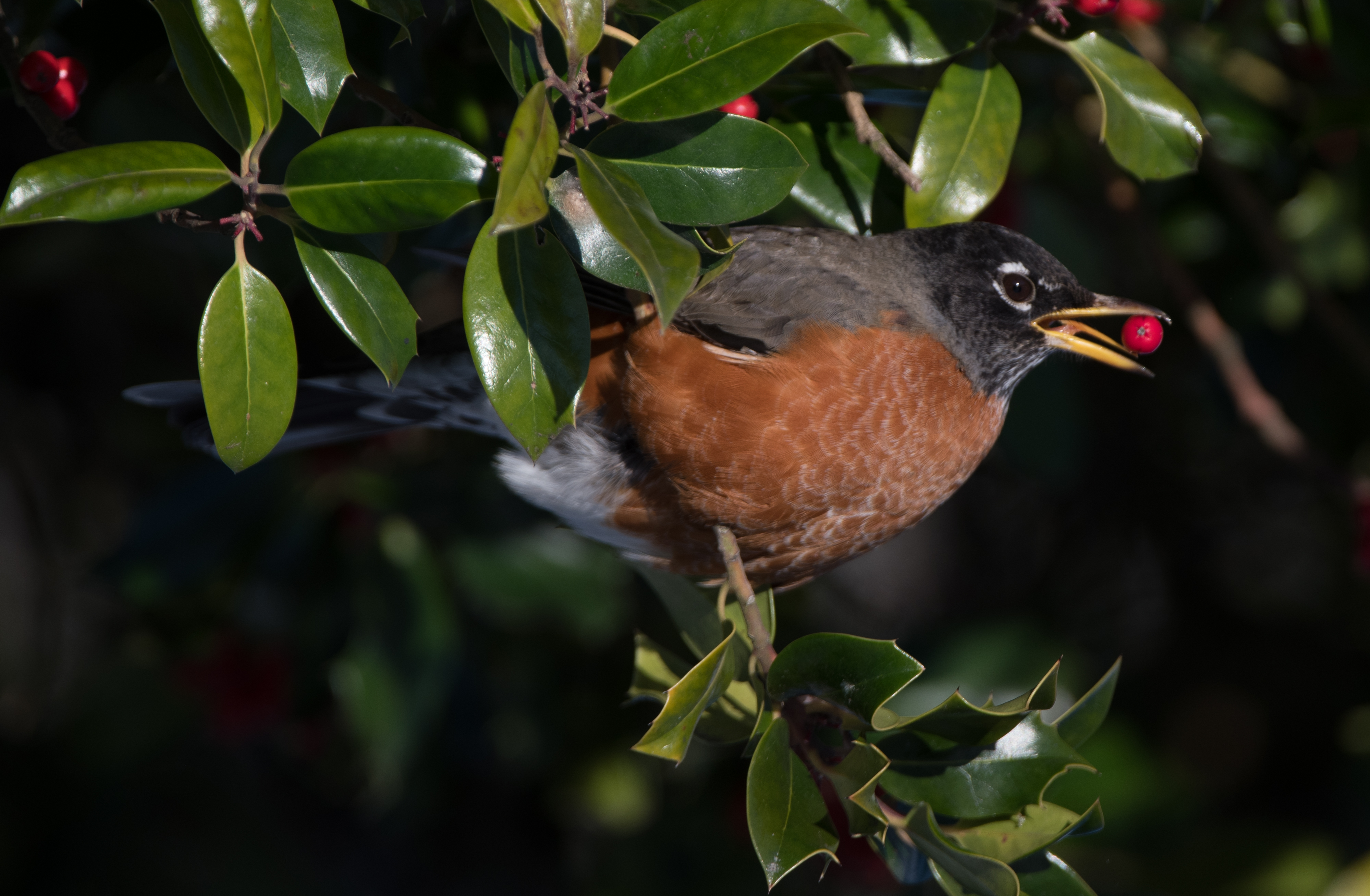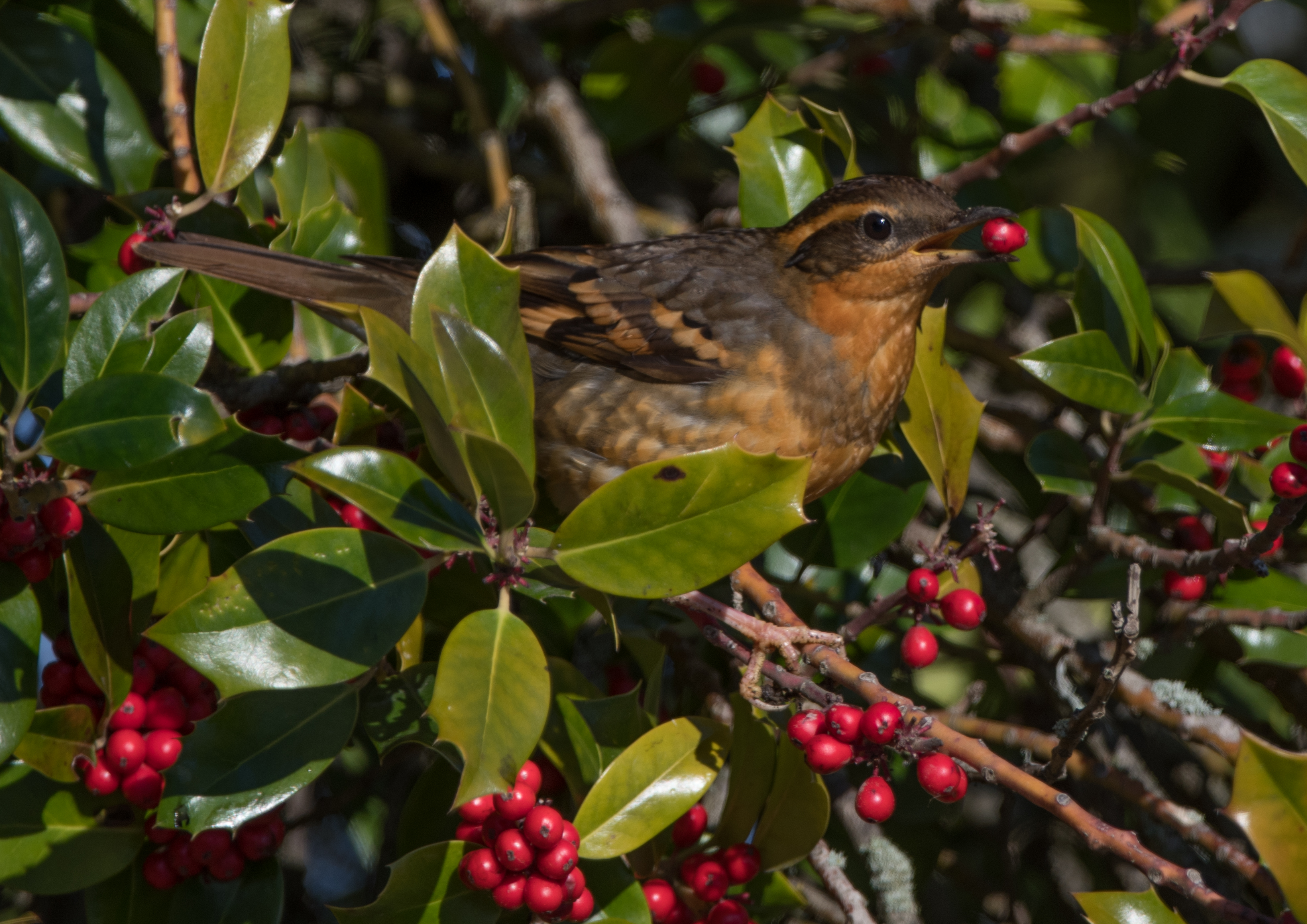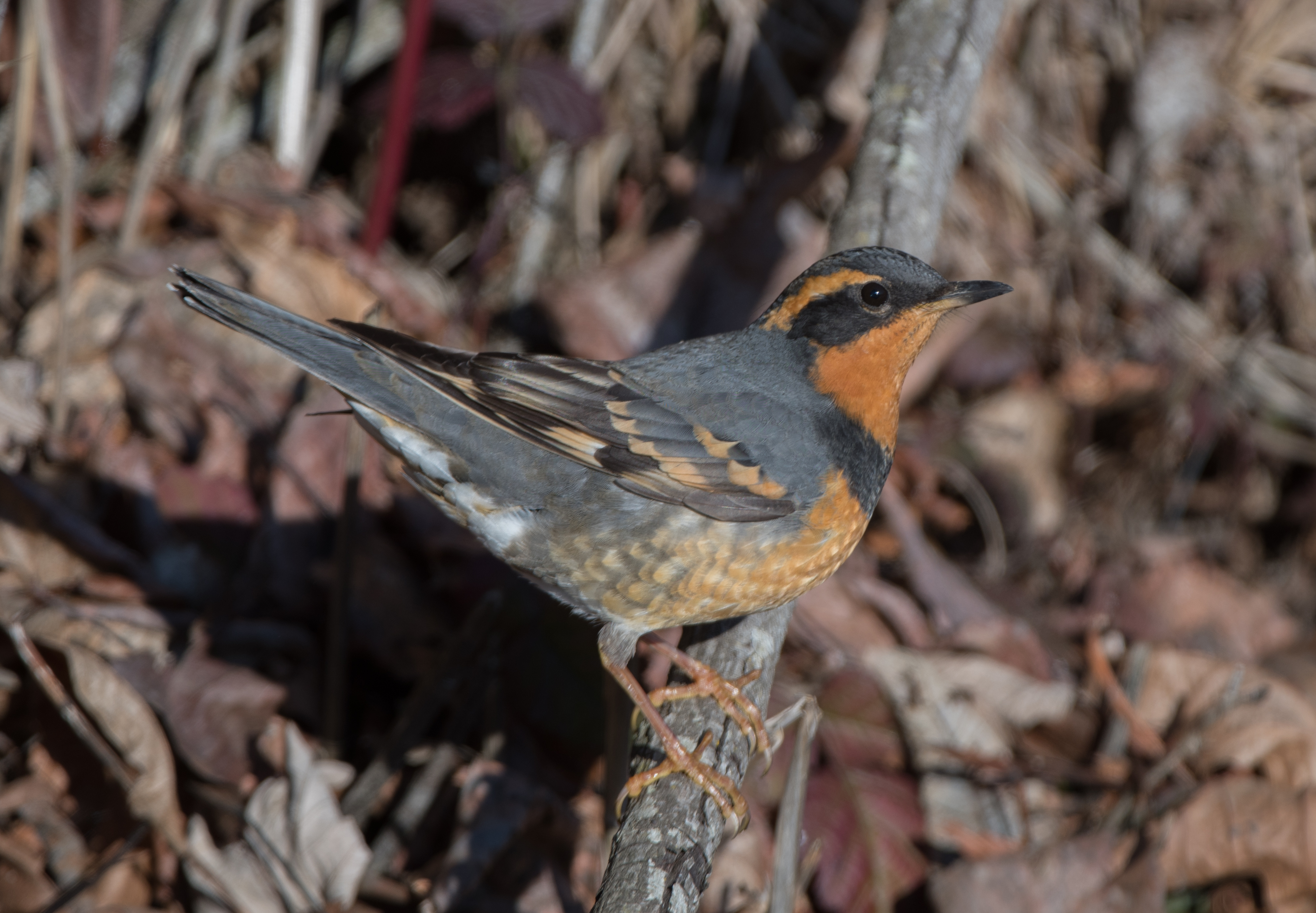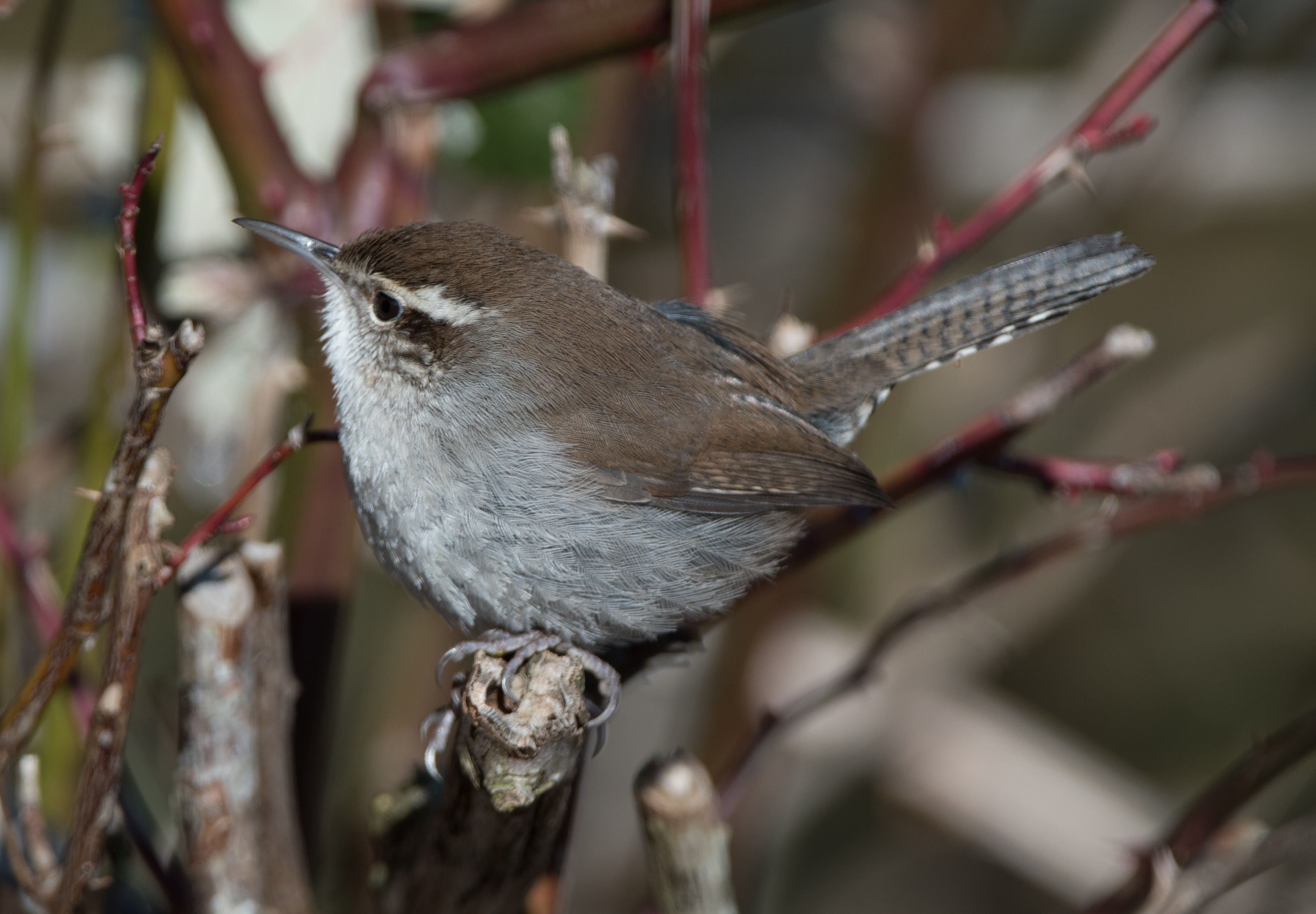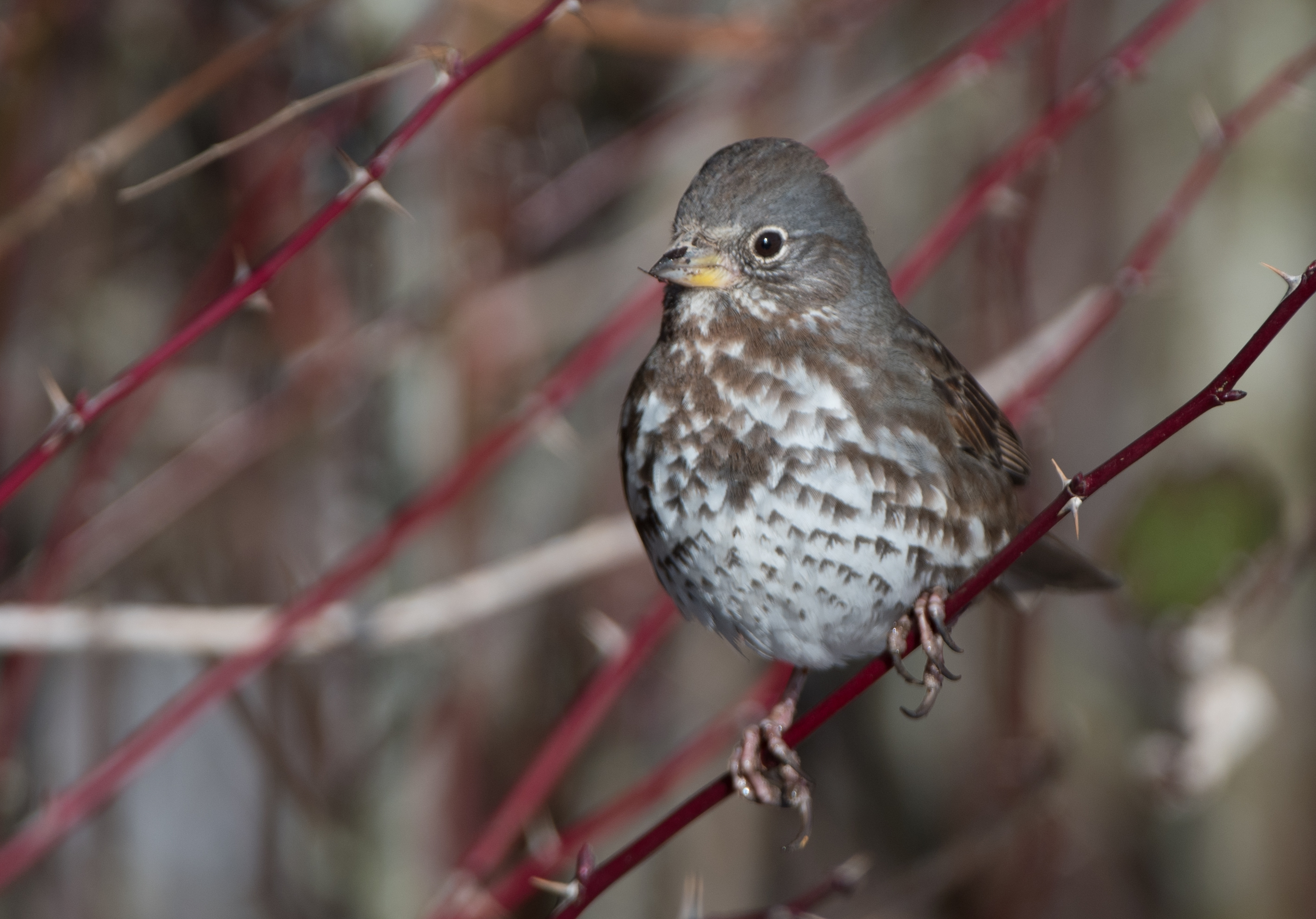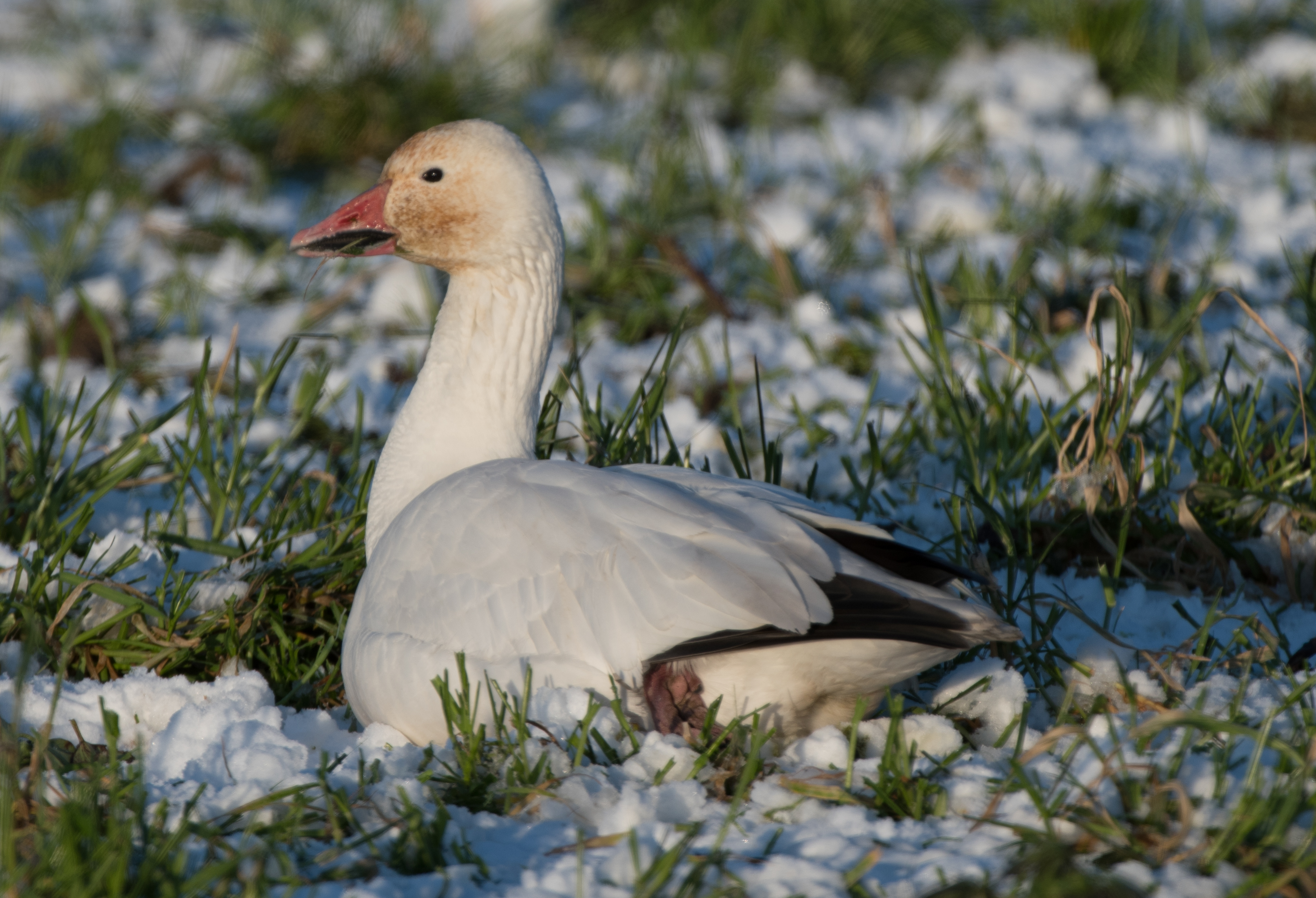Winter is here and it’s the time I spend more time in the car attempting to photograph birds on the road rather than rely on those that visit the yard, in part to expand the number and kinds of species to add to my photographic inventory. I made an outing on Jan 31, and at the risk of boring readers, I’m going to take you through my experiences.
March Point is always “hit or miss” and this winter I’ve found far fewer waterfowl and shorebirds to photograph. Notably missing are the Dunlins that have been so prolific in past years�. On this particular day I found what is apparently a female Common goldeneye in winter plumage that had drifted in close enough to be in photographic range. 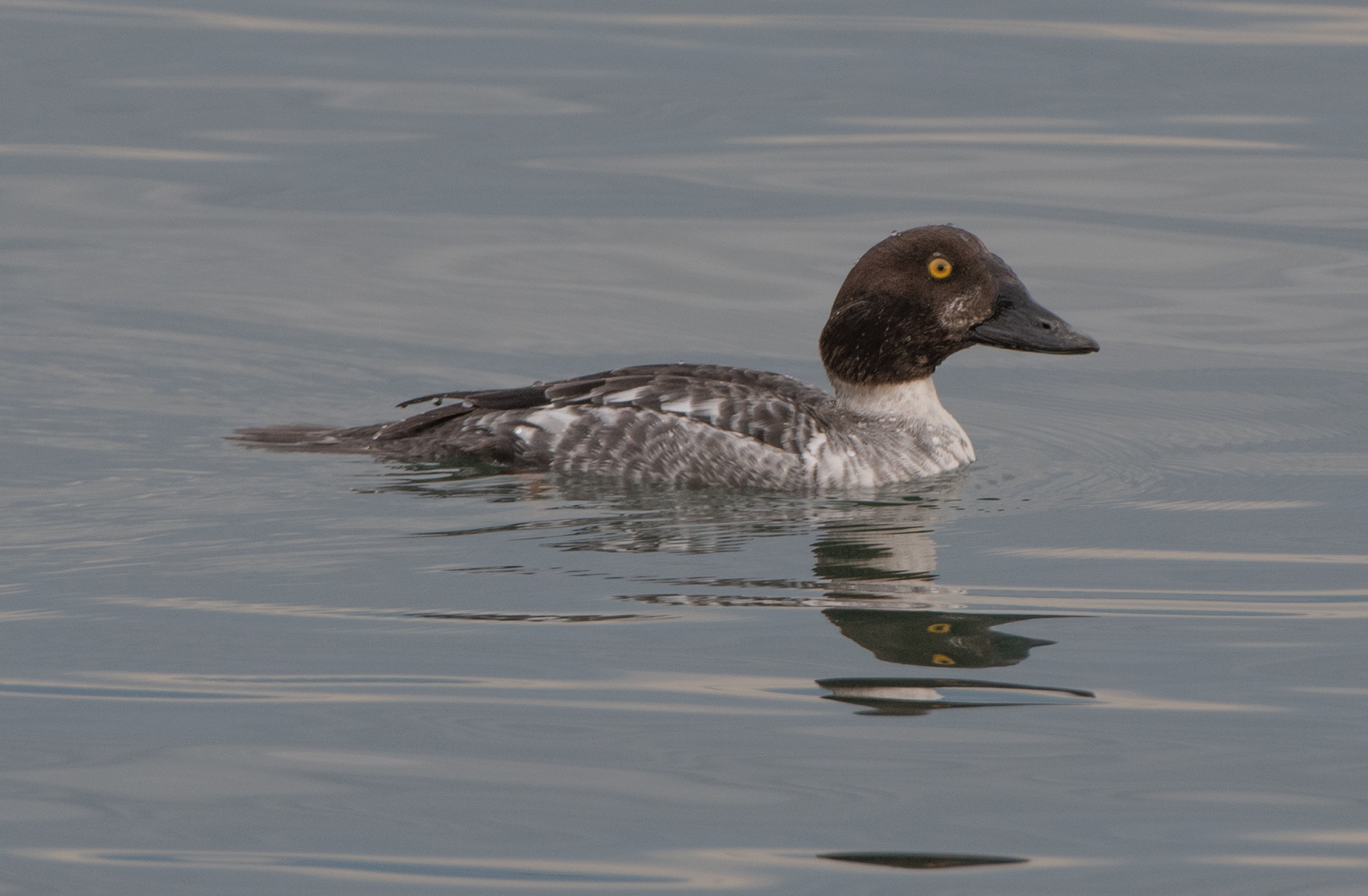
Not much farther on I found a group (considerably larger than the four in this photo) of mostly male American wigeons. The interesting thing about this observation is that, just like the week before, the American wigeons were accompanied by a single male Eurasian wigeon. And as I pulled to the side of the road for a photograph, ALL of the American wigeons flew a hundred feet os so further away, but the Eurasian wigeon remained. 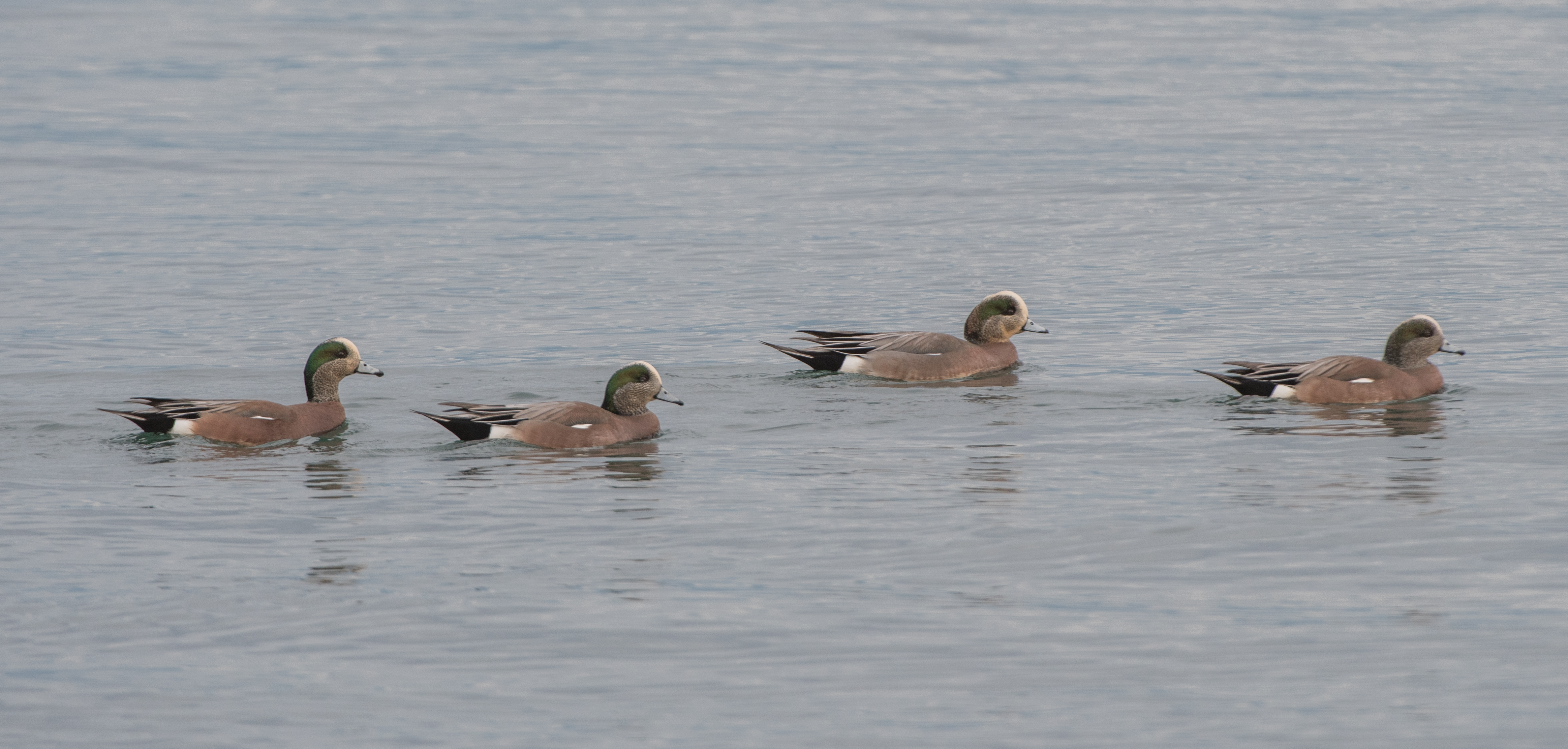
Just another difference in species that you probably won’t get from a field guide!
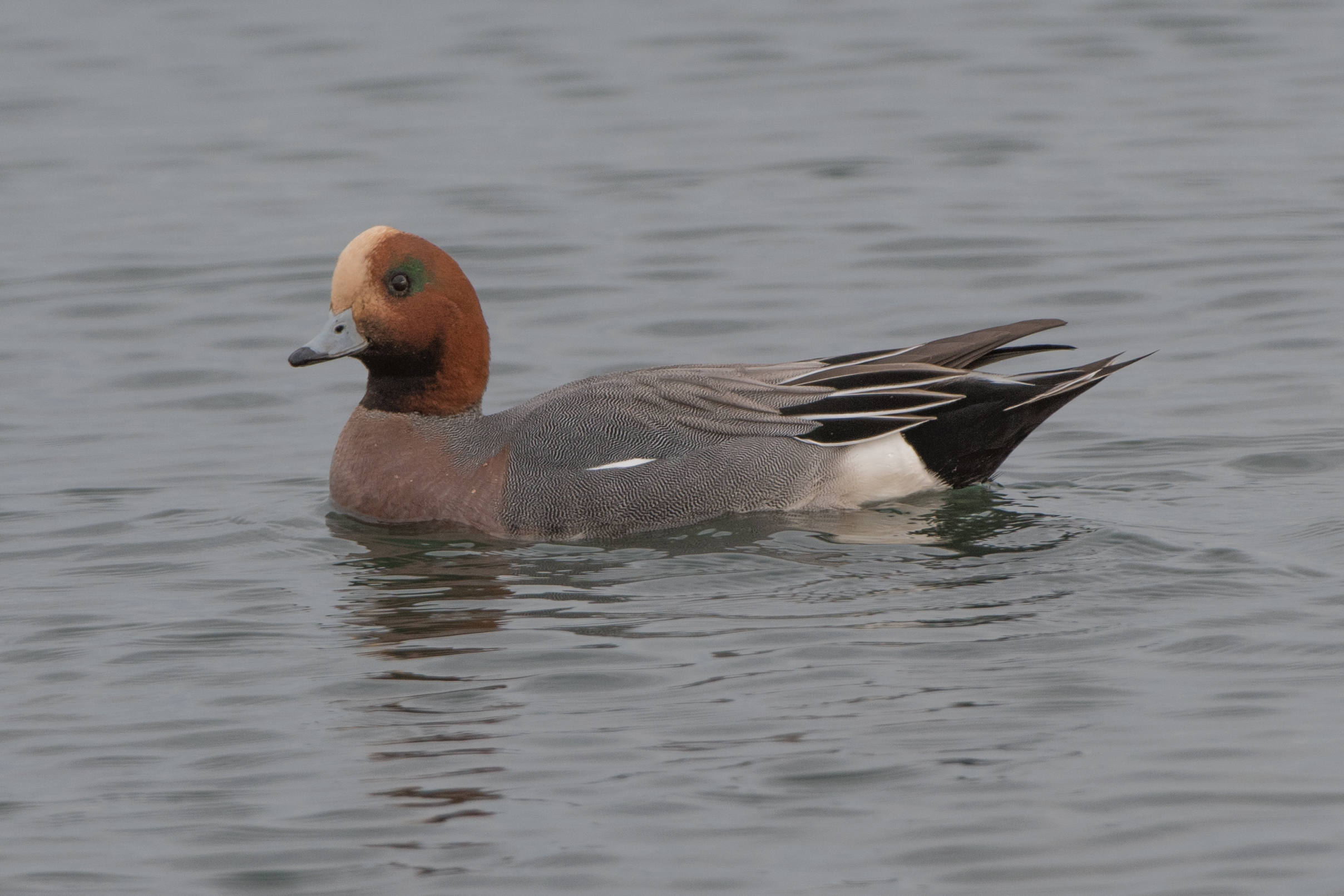
Moving to Channel Drive I encountered a pair of sub-adult Bald eagles, one of which is pictured below.
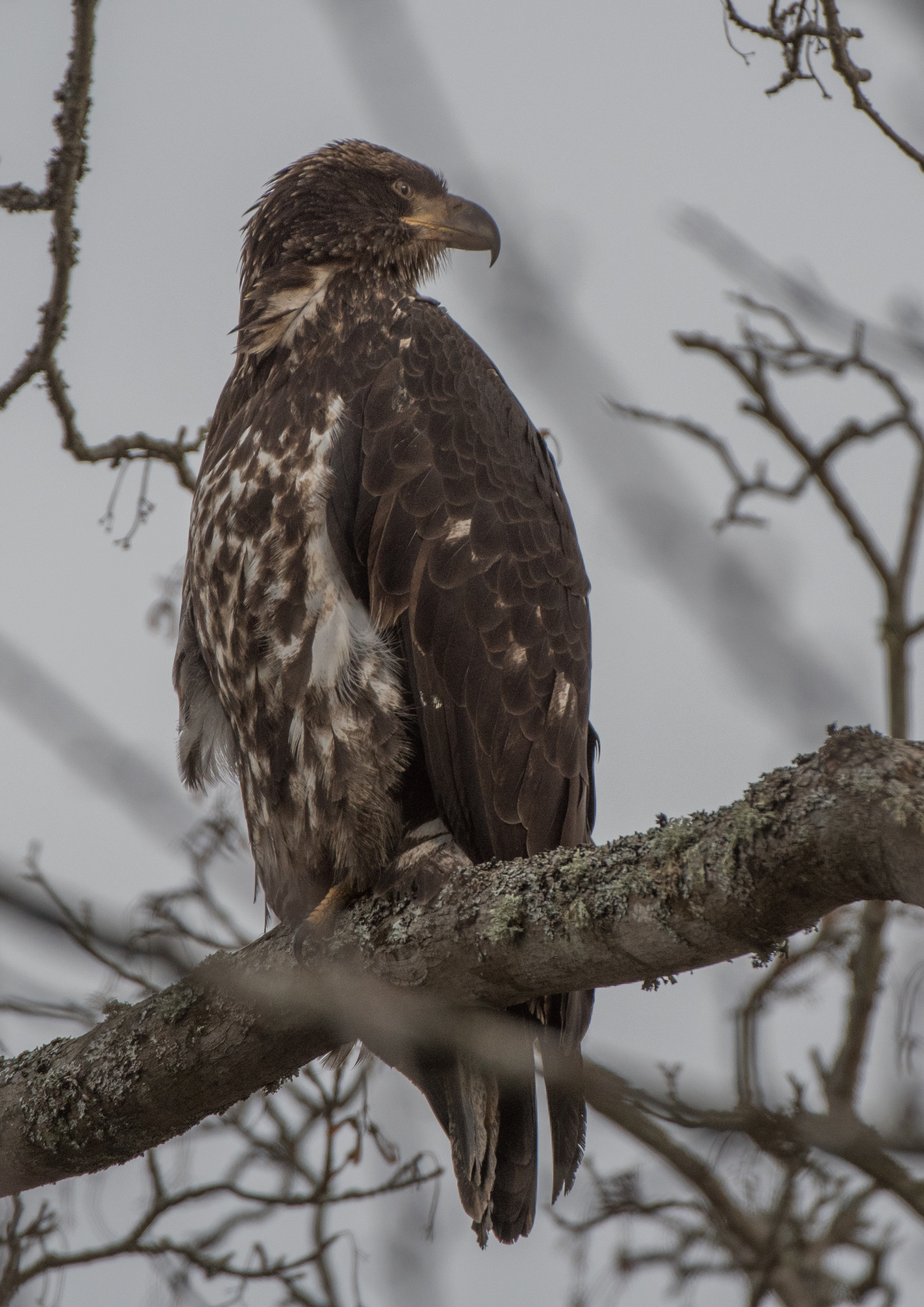
And along the road I picked up photos of:
A male Spotted towhee,
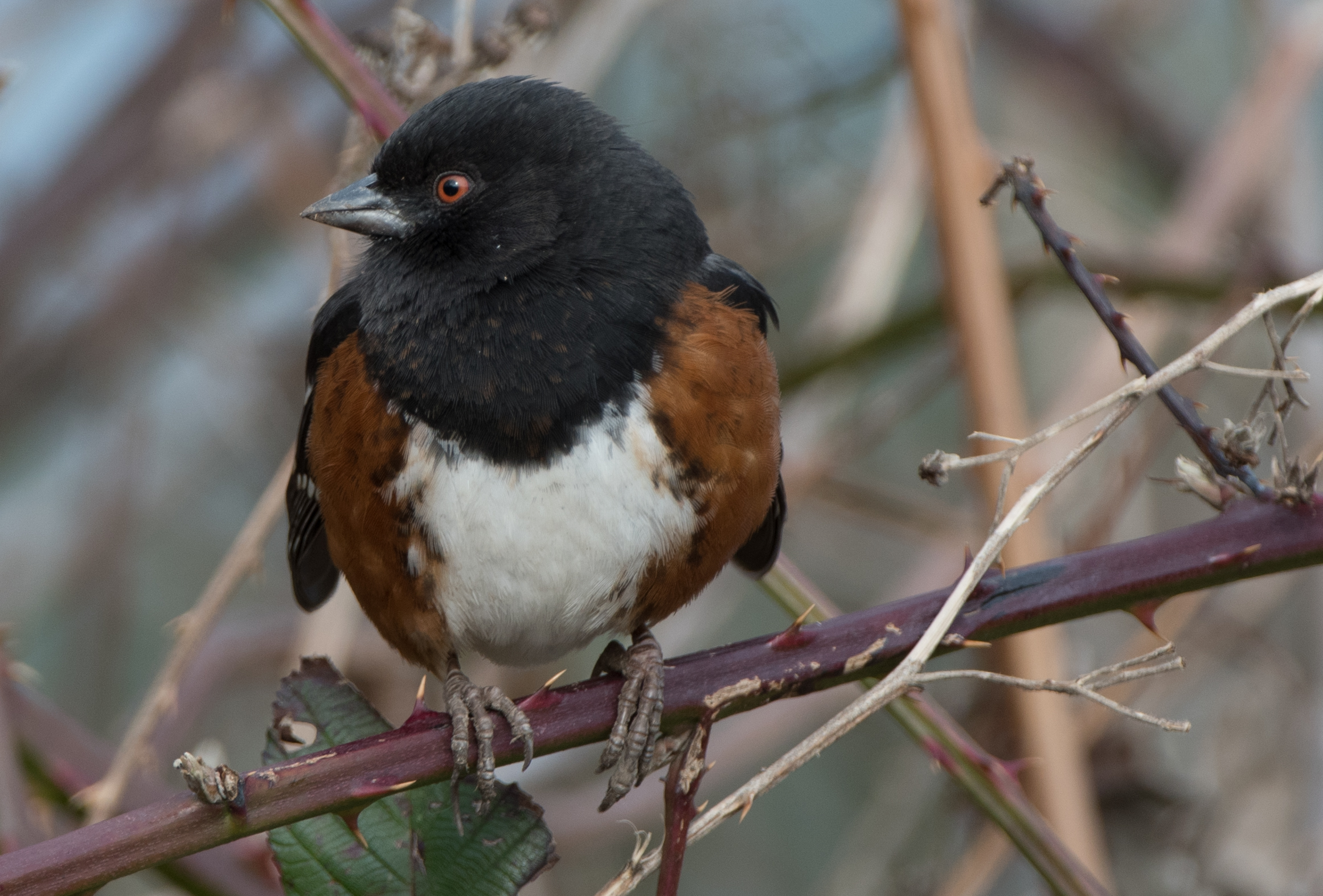
(A rare opportunity to photograph) a Mourning dove,
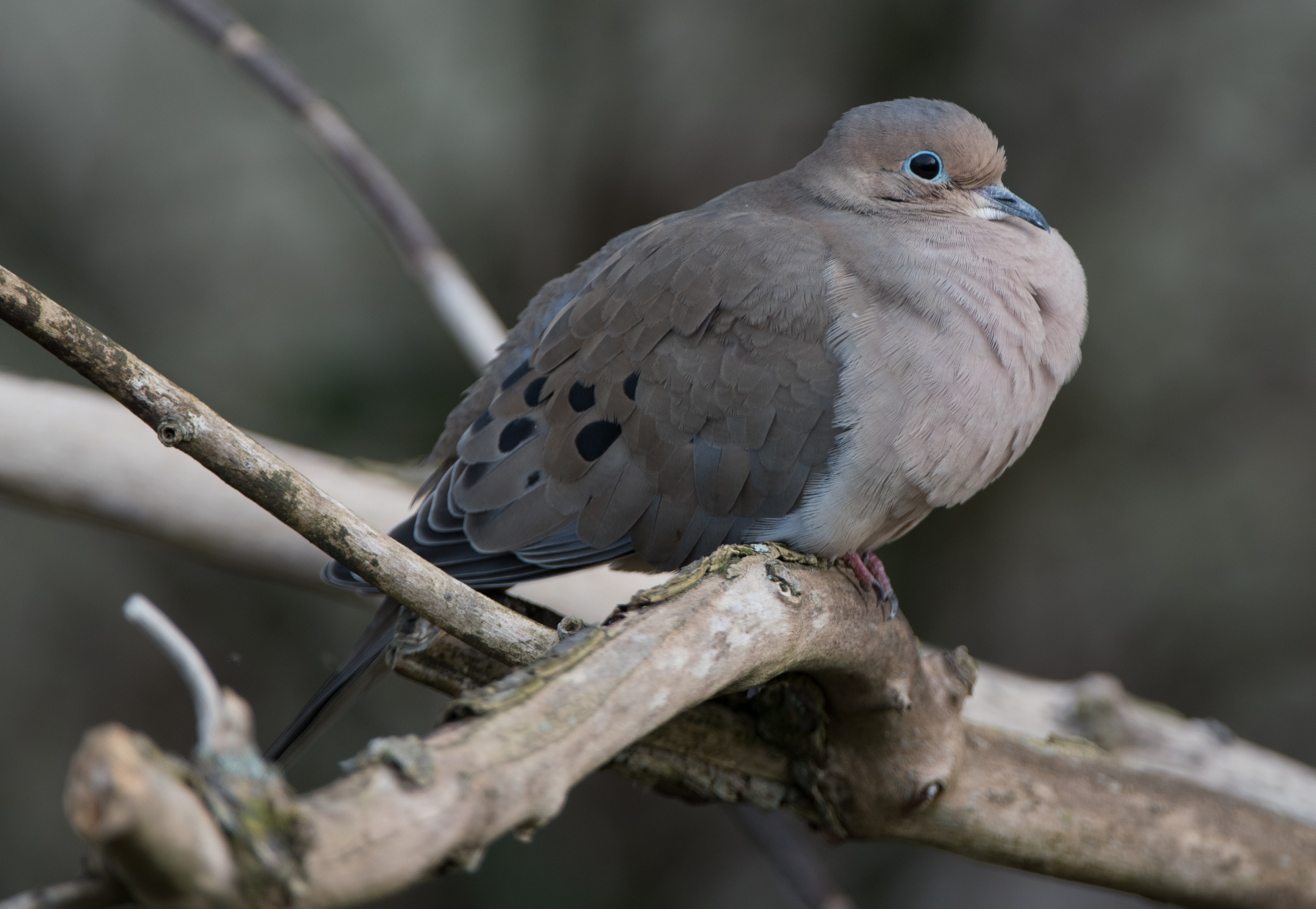
And a Song sparrow.
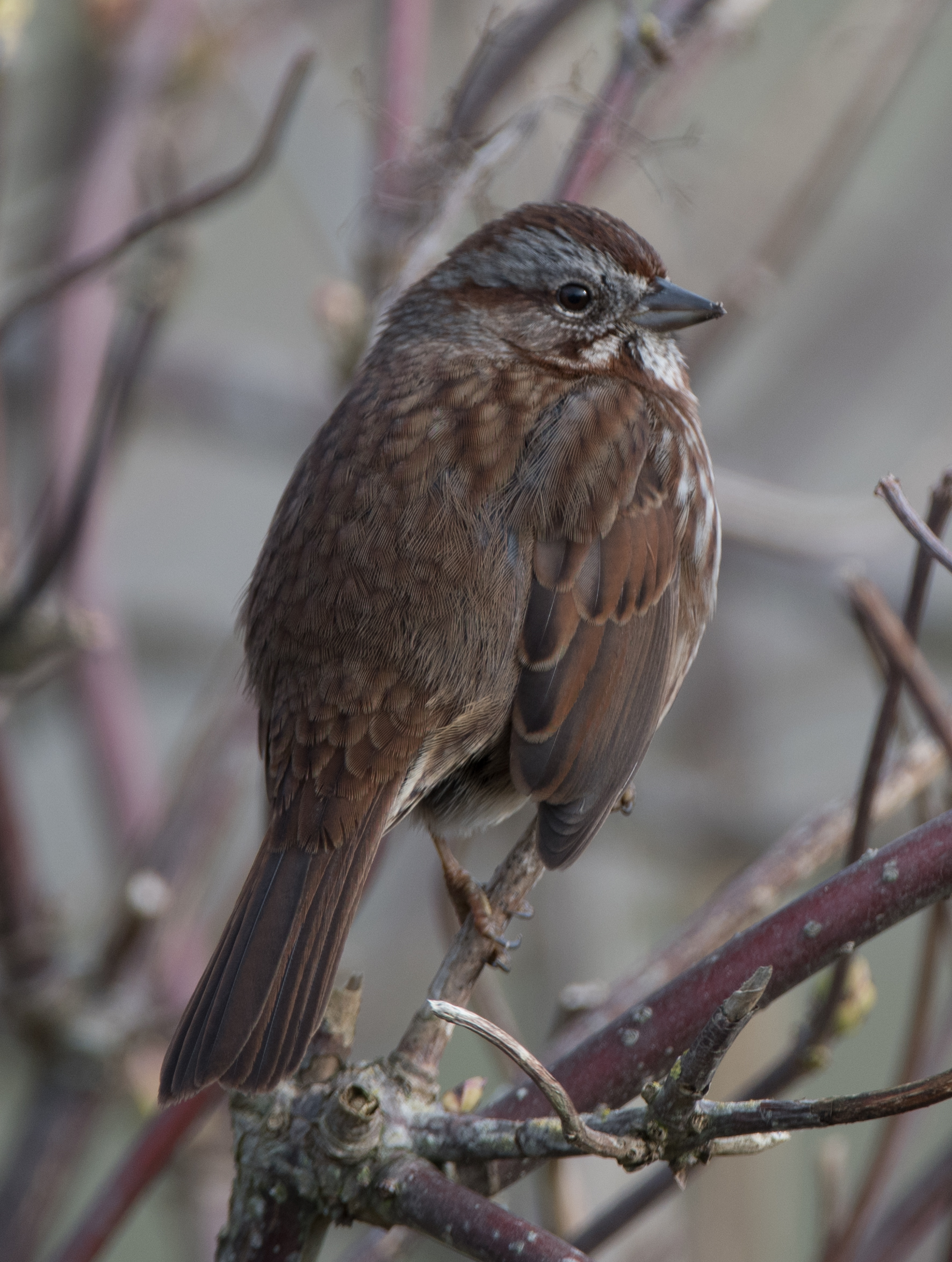
I also watched a Double-crested cormorant wrestling with some kind of flounder at least the size of my hand, the largest fish I have ever seen a waterfowl catch and eat. I obtained photos but none fit to display.
Moving on, towards Fir Island, I photographed this Black-capped chickadee, attracted by a little “pishing”. …

In a farm field on Fir Island I finally found a group of about 40 Dunlin…
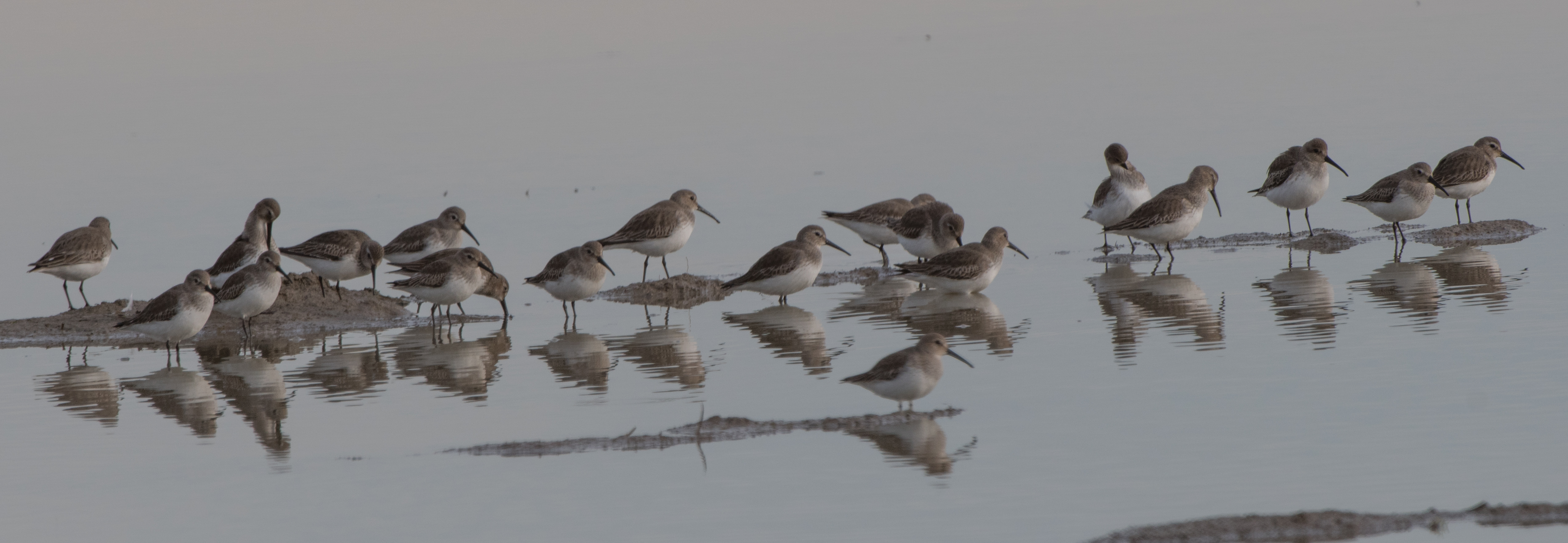
At the Jensen F&W Access I had the opportunity to photograph another sub-adult Bald eagle.
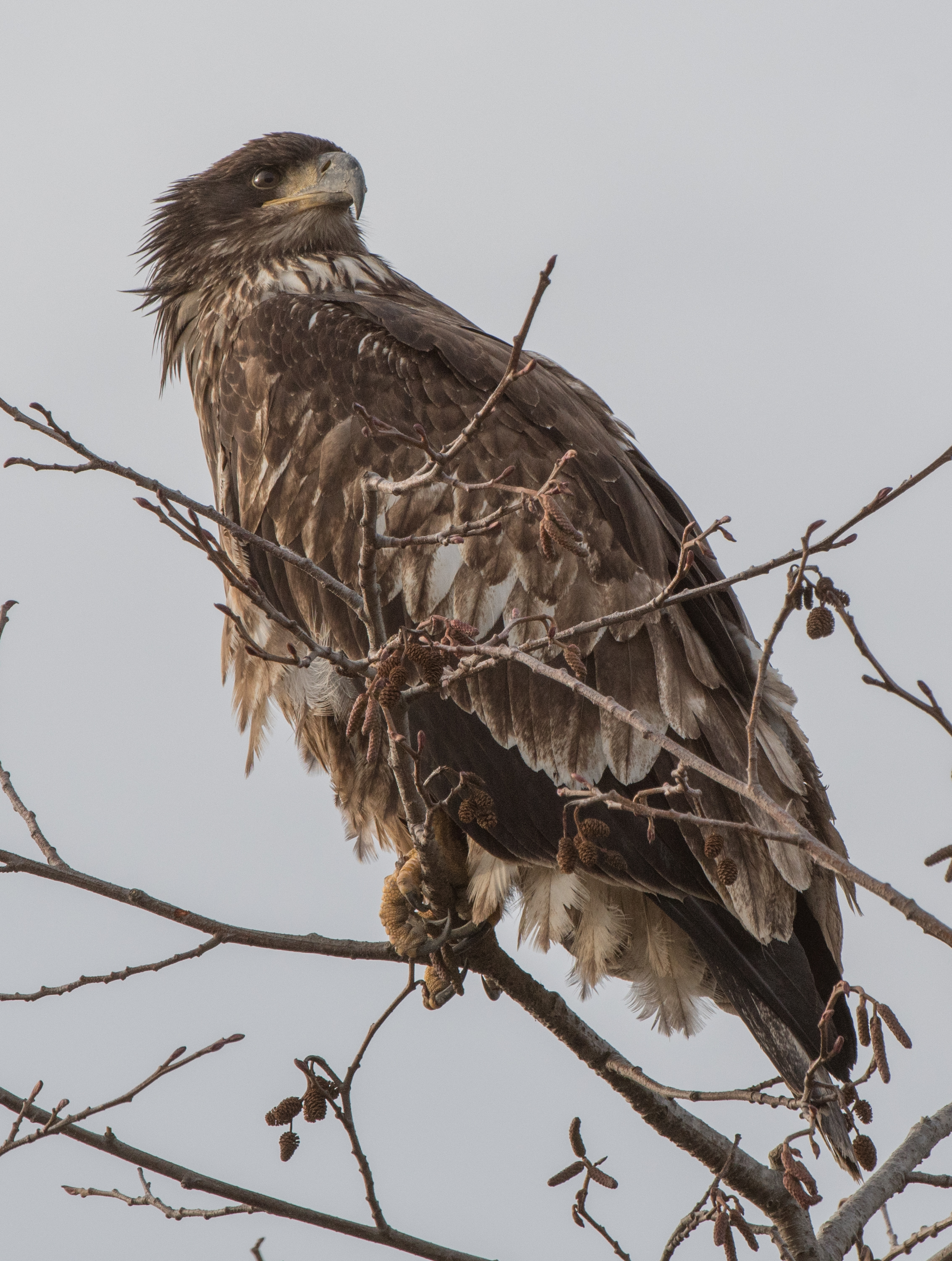
I next has another interesting observation, but alas, with no photos. I pulled into the Hayton F&W Access and found several hundred American wigeons grazing in a field, a wondrous moving carpet that surged one way and then another. At one point a person pulled in front of the group and exited their car which sent the flock back a hundred yards or so… very frustrating!!! All of a sudden, with no cause evident, the entire group (several hundred as I’ve stated) flew into the air and landed in a waterway about a hundred yards away. At first I couldn’t determine what spooked them, but as I glanced at a large tree behind me I saw a Peregrine falcon land. So why did the birds only fly about a hundred yards and land in water? It’s my theory they know the falcon can’t snatch them on water and carry them off. Had they been attacked while on land they would have been the proverbial “dead duck”.
Moving on to the HQ Tract of F&W, I managed a few photos of Yellow-rumped warblers (Audubon’s) flycatching and the rare bird that has inhabited the area since sometime last summer, the Black phoebe. (Still there, still often observable from the road.)
As I was considering leaving, a Red-tailed hawk flushed from the ground and, completely out of character, allowed me to take multiple photographs from multiple positions from my vehicle. I consider these fairly rare photos for the county because the hawk was not on a power line or power pole!
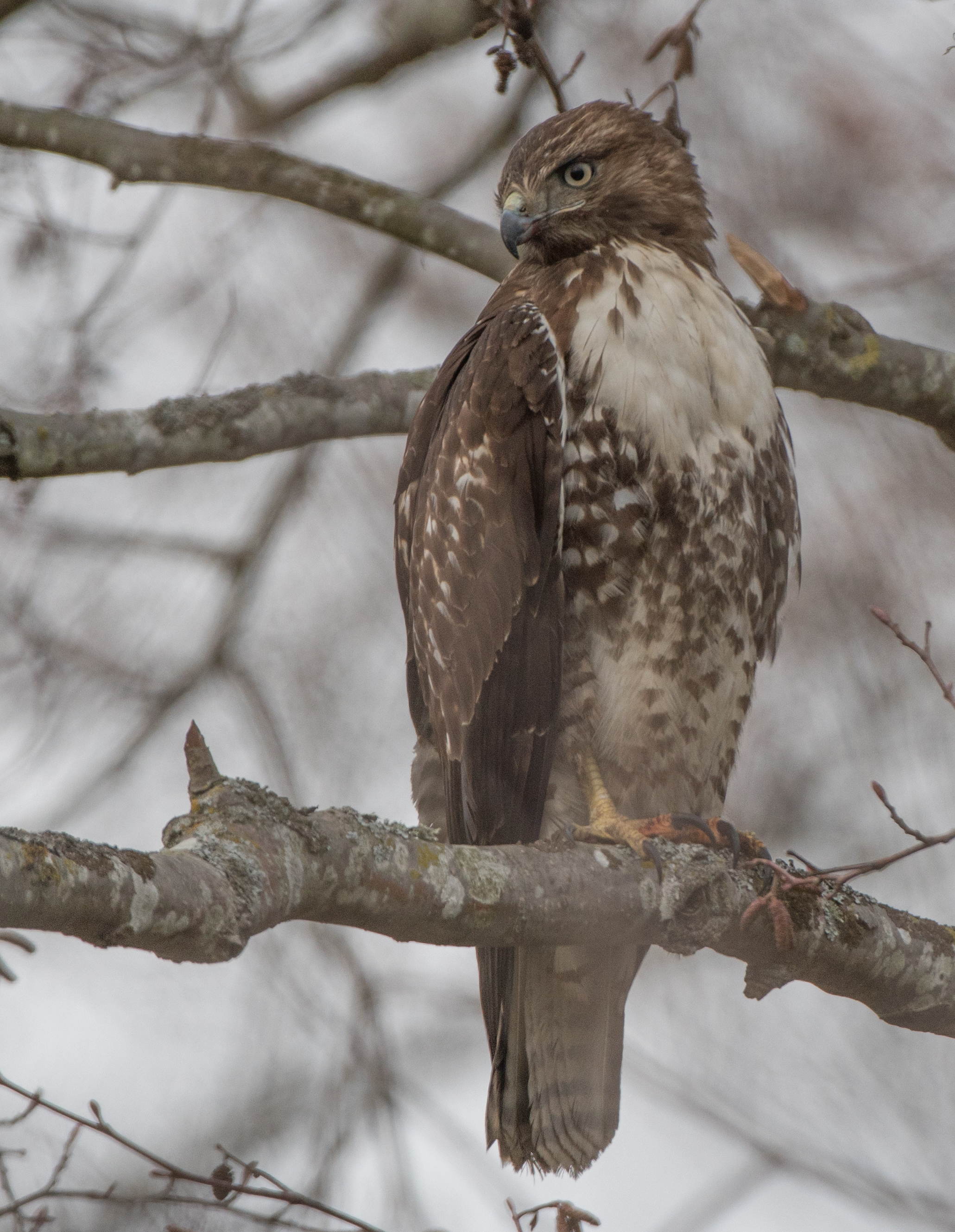
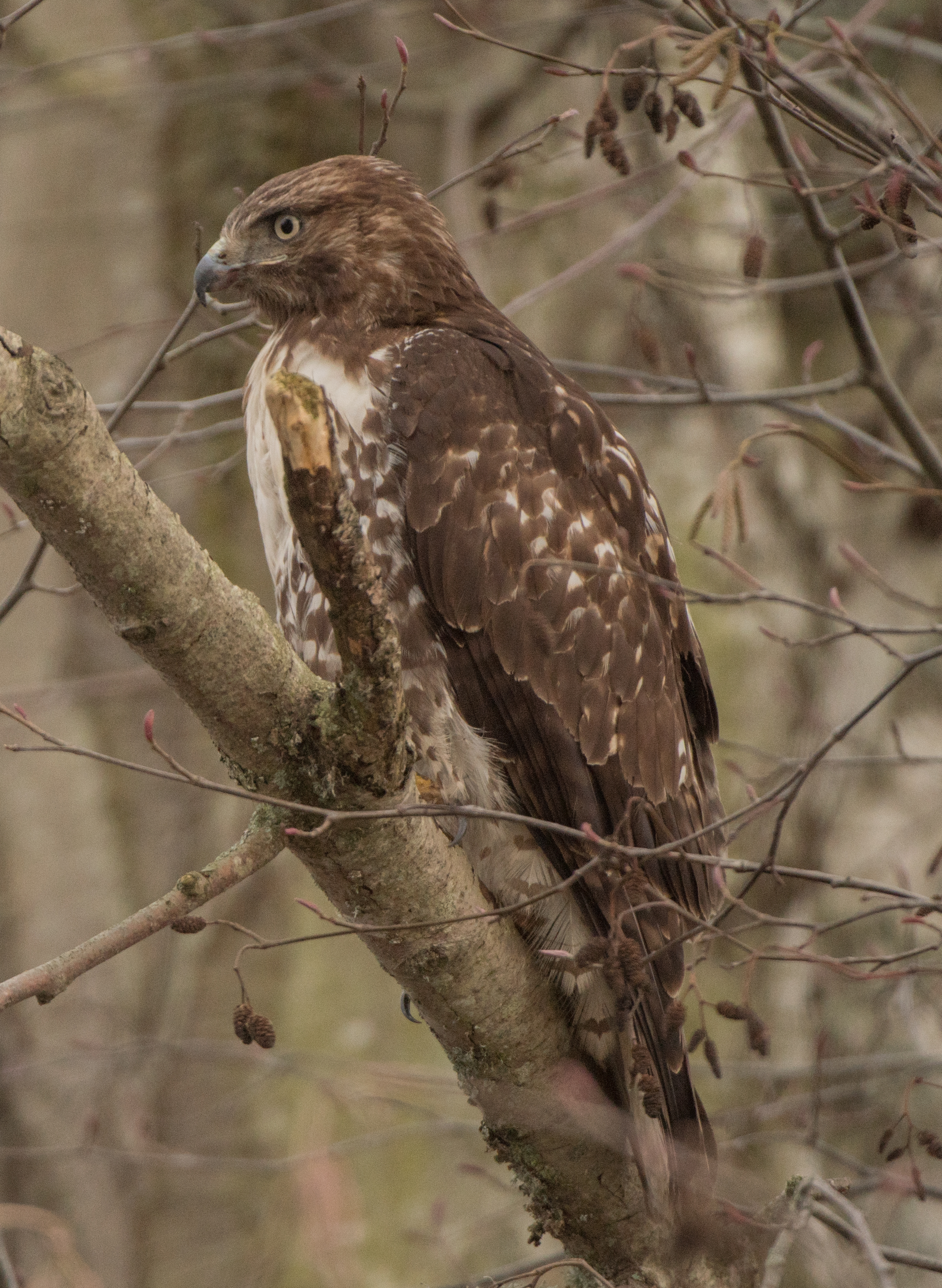
After taking the hawk photos I was about ready to head home, but I noticed a disturbance in the water below me and a Double-crested cormorant popped up beside me�. After a few minutes it was joined by another one. They were both VERY successful at catching small fish, but photos were difficult to come by because the small fish would be downed immediately upon the birds surfacing.
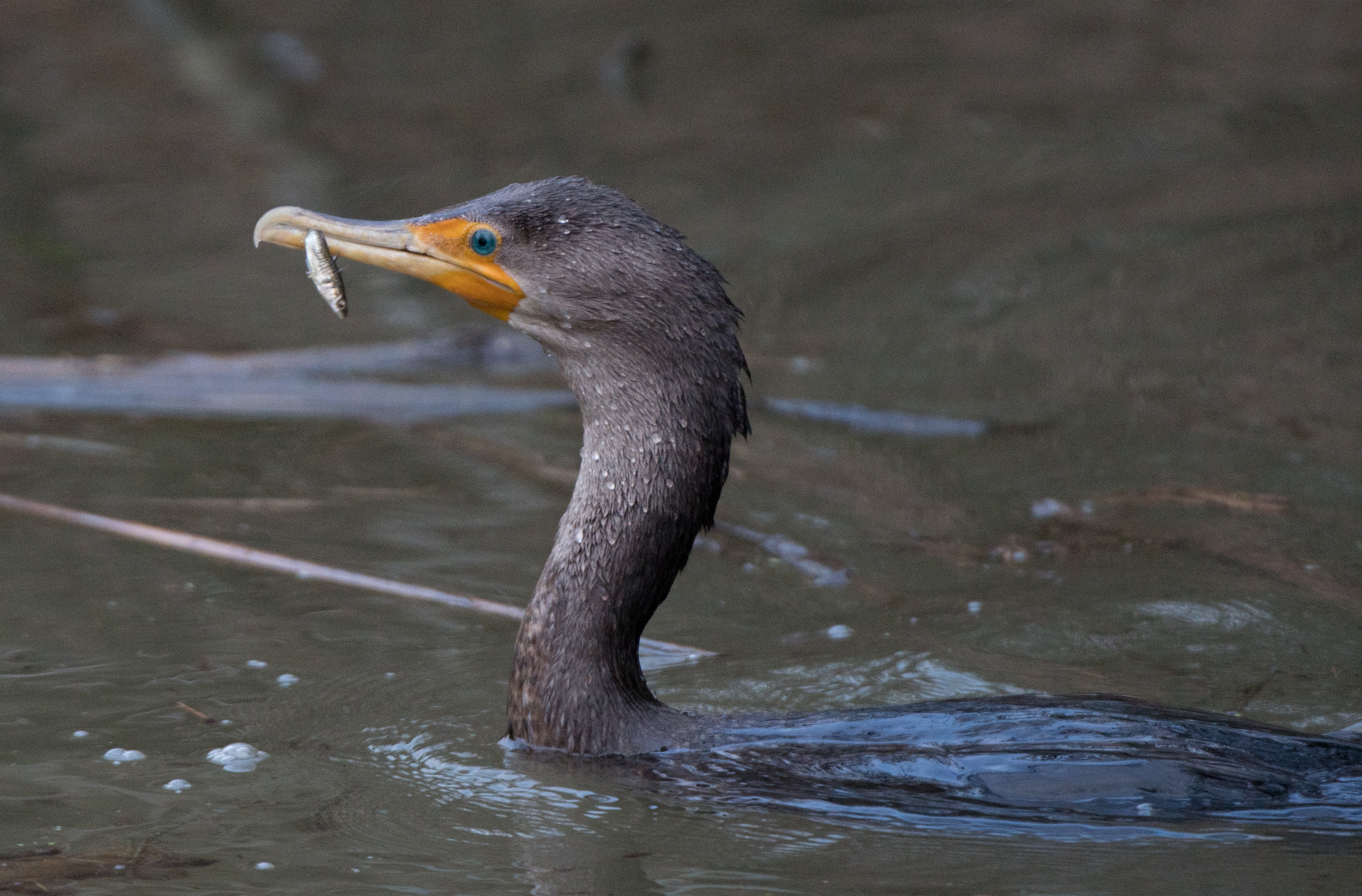
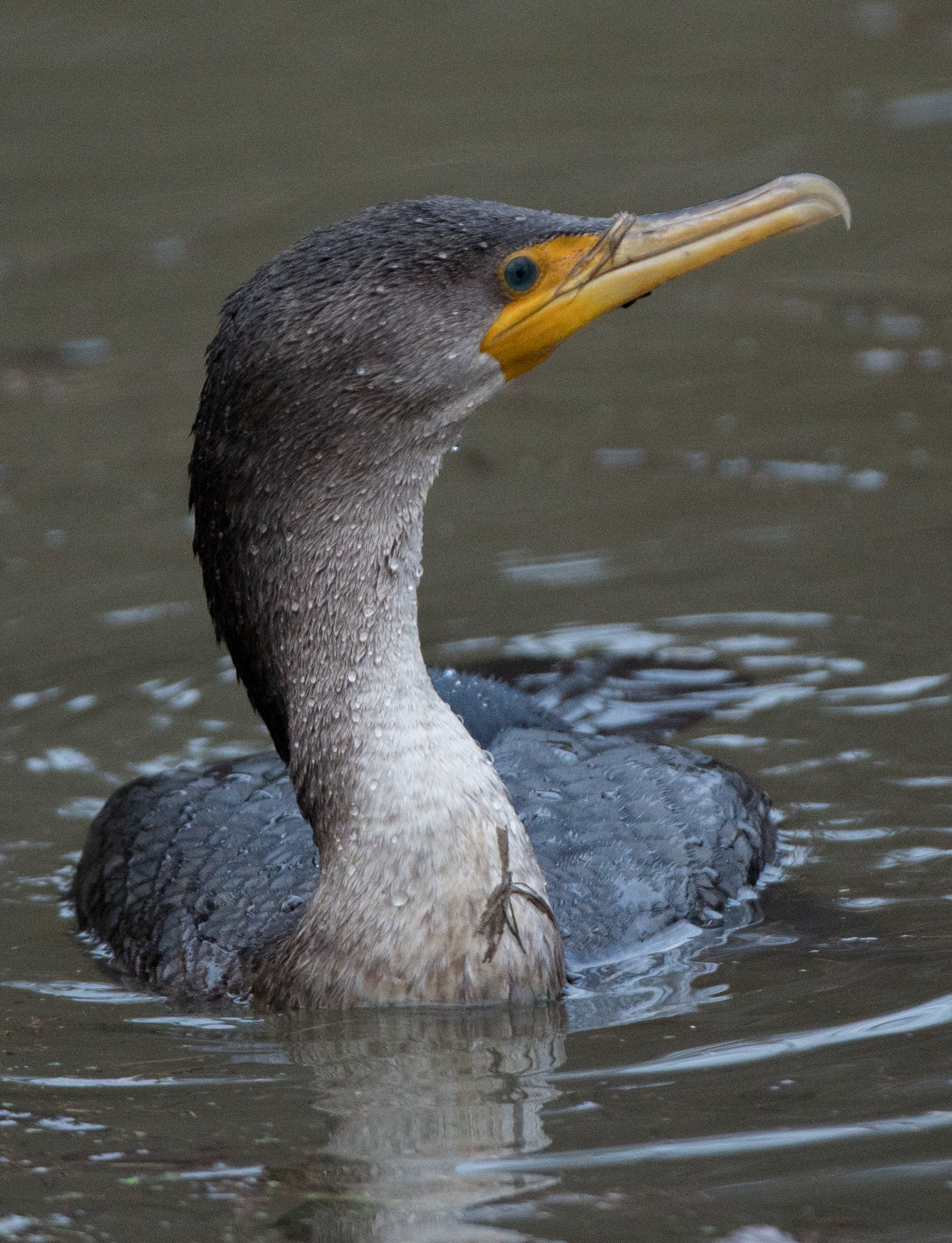
By now it was after 4pm, the light was fading and I was ready to head home. But there was one treat left. As I made the 90-degree turn on Fir Island Road I saw that a flock of thousands of Snow geese had moved to a field adjoining the Jensen F&W Access. I turned down the access road and watched and photographed Snow geese for many minutes. The geese were moving towards parked cars when a car drove in front of them and another driver got out of his car. (He could easily photographed with his phone from INSIDE his car) and these actions set the geese off and they moved back 100-yards or so. I took several video sequences of eruptions with my iPhone video but don’t know how to get it onto my web site.
This was a 200+ photo day, but less than judicious pruning brought my take down to 96 photos. Some people wonder why I don’t read more. This was a full afternoon of photography, several hours of editing, and another couple of hours putting together this post! I’m probably through for the weekend until it possibly snows!

